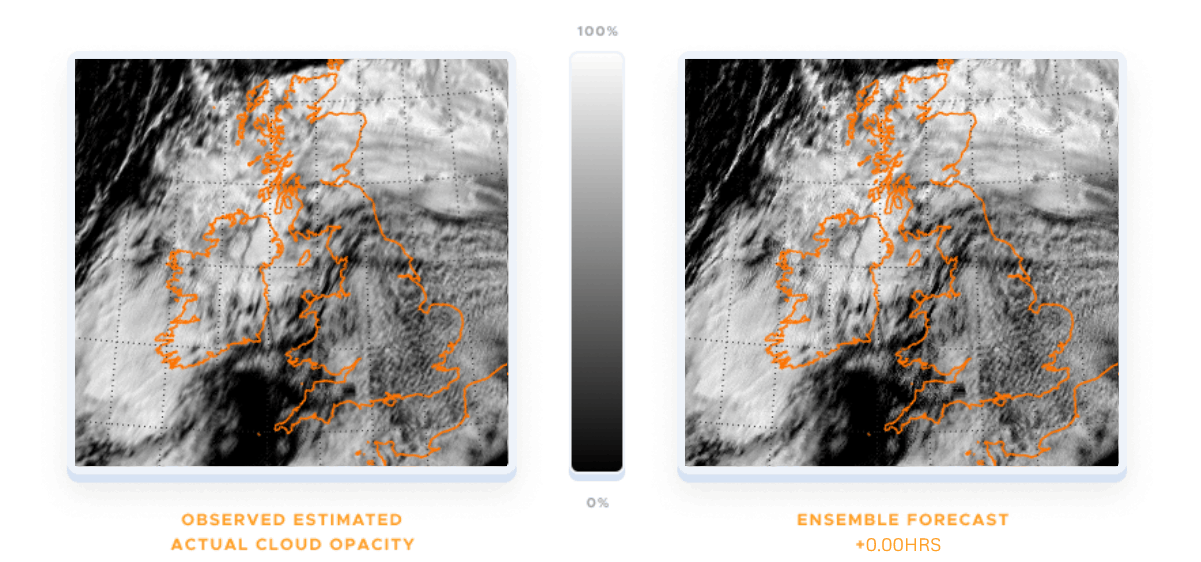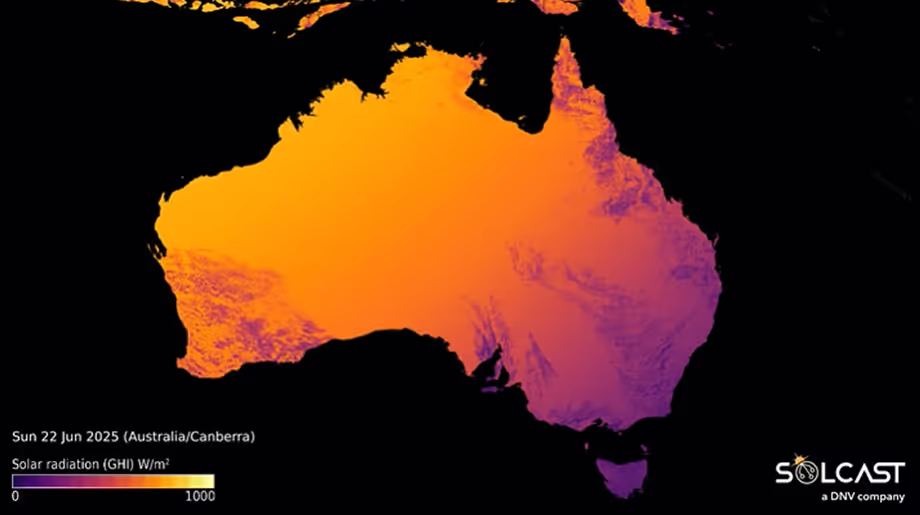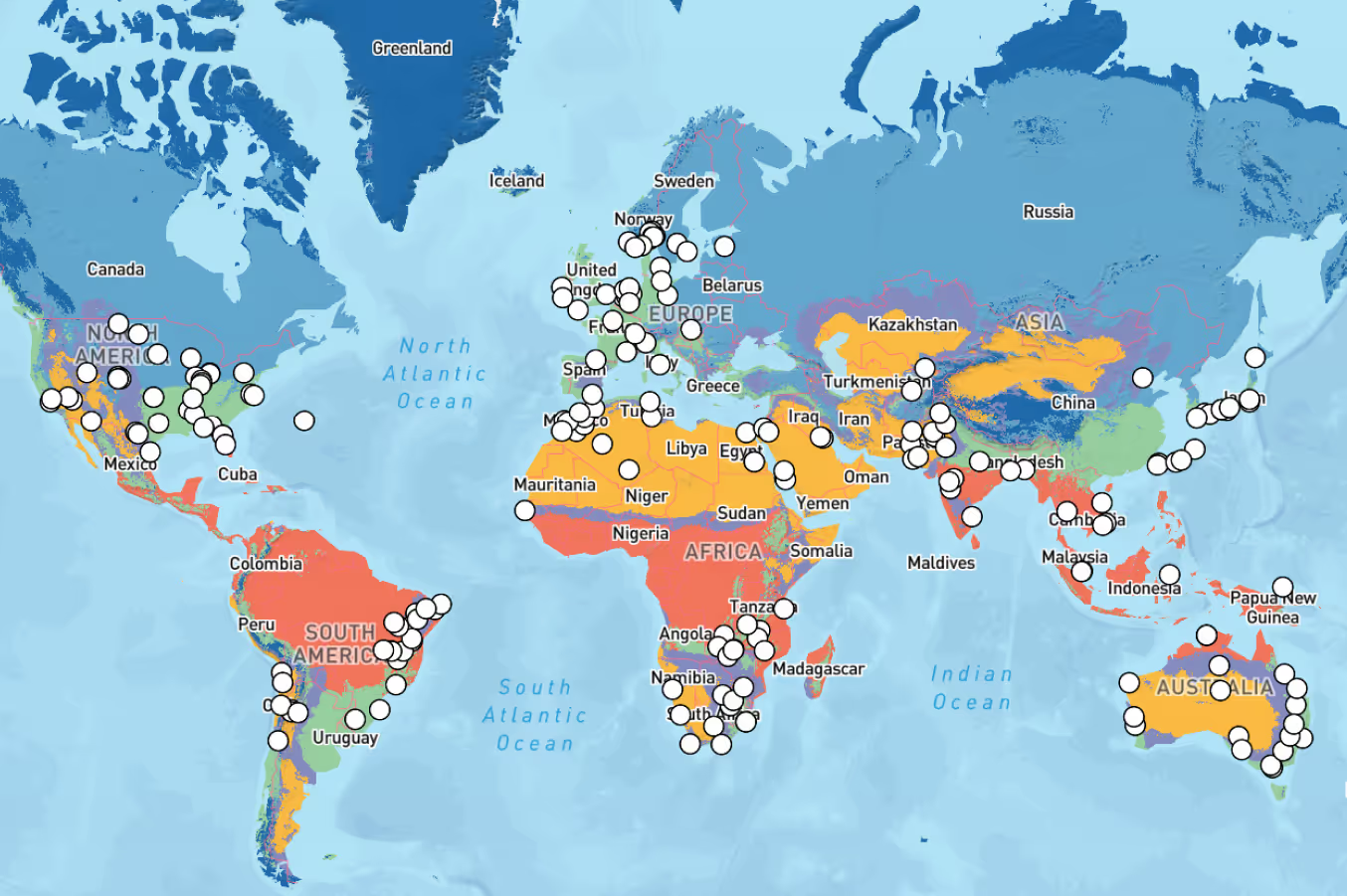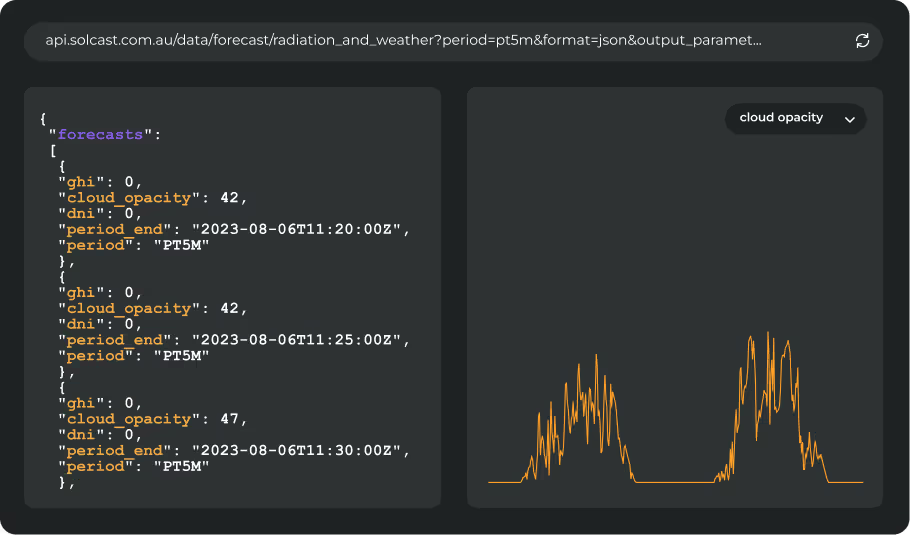In the solar power generation industry, accurate intra-day irradiance short term forecasts, or ‘nowcasts’ play a crucial role in optimising market operations, and increasing efficiency. Not to mention the control of grid-scale storage and solar+storage hybrid plants. Operators of grids and solar assets need to be able to understand the ‘solar pipeline’ so they can predict how much power they will be generating that day, which requires that they have the latest short-term forecast considering the actual locations and thicknesses of clouds observed by satellites. In this article, we'll dive into the world of nowcasting, discuss its importance, and explore how this cutting-edge technology is playing a key role in the energy transition.

What is a ‘nowcast’?
‘Nowcasting’, is a term that combines "now" and "forecast", and is the process of predicting weather conditions over a short period, usually from a few minutes to about five hours ahead. Nowcasting was originally defined as “the description of the current state of the weather in detail and the prediction of changes that can be expected on a timescale of a few hours” (Browning, 1981). Over the years, advancements in technology and data processing have greatly improved the accuracy of weather nowcasts, making them increasingly valuable across various industries. In the context of solar energy, an irradiance-specific nowcast provides all the weather and irradiance metrics needed to understand the amount of power that can be generated at a particular location in the near future. This information is invaluable to solar power plant operators, who can make real-time adjustments to optimize energy production and make storage decisions.
Nowcasting in industry
The importance of nowcasting extends beyond the solar industry. For example, in aviation, nowcasts help pilots and air traffic controllers make crucial decisions related to takeoffs, landings, and in-flight adjustments. In railway transportation, snow nowcasts are used to assess railway conditions for trains, ensuring safety and efficient operations during winter weather events. In the insurance industry, companies utilize nowcasts to assess short-term risk, issue alerts to their customers for dangerous weather conditions and make informed decisions on coverage and claims.
However, within the solar industry, nowcasting is particularly critical due to the variable nature of cloud-impacts on solar irradiance. Accurate irradiance nowcasts enable solar power plant operators to efficiently manage their operations, monitor performance and identify faults, and optimize energy storage systems, all of which are heavily impacted by sudden fluctuations in sunlight.
The challenge of producing accurate solar nowcasts
Creating accurate nowcasts is no easy task. Solar irradiance is influenced by a variety of factors, such as cloud cover, aerosols, and the angle of the sun. Whilst calculating clear-sky irradiance is complicated, it’s usually very predictable. The real challenge for an accurate nowcast is predicting cloud cover and cloud movements, which requires advanced technology and sophisticated data models and algorithms. Traditional weather forecasting methods often fall short when it comes to producing precise short-term forecasts due to the complexities and speed at which clouds develop.
Some solar PV production forecasting approaches do a very basic version of nowcasting using “auto-regressive” approaches, a family of approaches where the recent output of the plant and/or the recent surface irradiance measurements are used. This approach can help to reduce error statistics somewhat for the first 30 to 60 minutes of the forecast horizon compared to weather models, but because it can only look at data from the past, it can’t forecast any real ramps or changes in production, which in practice is what actually matters.
To solve this problem, Solcast uses satellite cloud tracking, using near real-time imagery from geostationary satellites, to understand how clouds are developing, moving and dissipating over time. Using these images, and detailed cloud modelling, our data produces cloud forecasts optimised for physical reality and accuracy, which is why our cloud nowcasts look so realistic. This type of forecasting, which processes vast quantities of data - 600 million forecasts per hour for us at Solcast - yields exceptionally high accuracy levels. Our team puts in significant effort to maintain this high accuracy, and we’re proud of the accuracy levels we've achieved.
The need for accurate solar nowcasts
An accurate irradiance nowcast is essential for the solar industry because it helps operators monitor their assets, maximize energy production and minimize costs. By anticipating fluctuations in irradiance, operators can proactively manage energy storage systems and adjust their operations accordingly. Efficient utilisation of storage assets, supported by accurate forecasts, allow solar producers to meet the energy needs of the power grid, helping reduce the need for costly backup power sources, such as fossil fuel generators, which can increase both financial and environmental costs.
Conclusion
In the solar power generation industry, accurate irradiance nowcasts are indispensable. By utilizing cutting-edge technology and advanced algorithms, our nowcasts help meteorologists, data scientists, and solar power plant operators optimize energy production, enhance power planning for solar power generation, reduce costs, and minimize environmental impacts.
If you want to learn more about how nowcasts can help you optimize your operations, get in touch with our team. If you want to get started today, you can create a commercial account and start your evaluation right now.










.avif)


